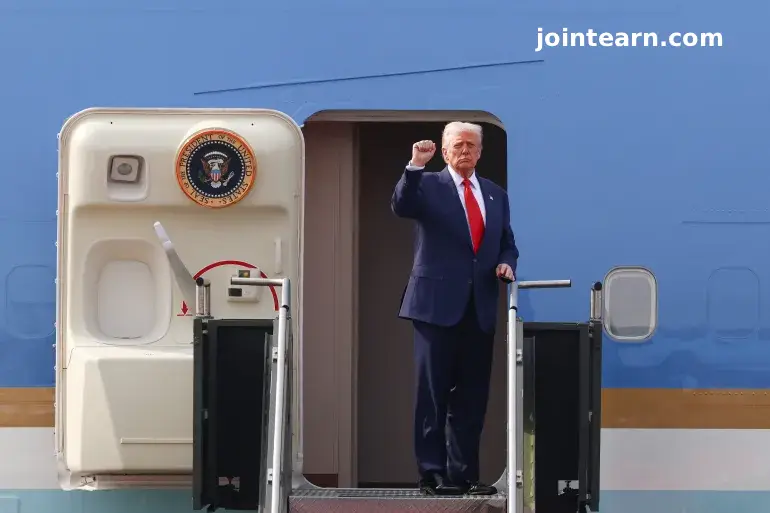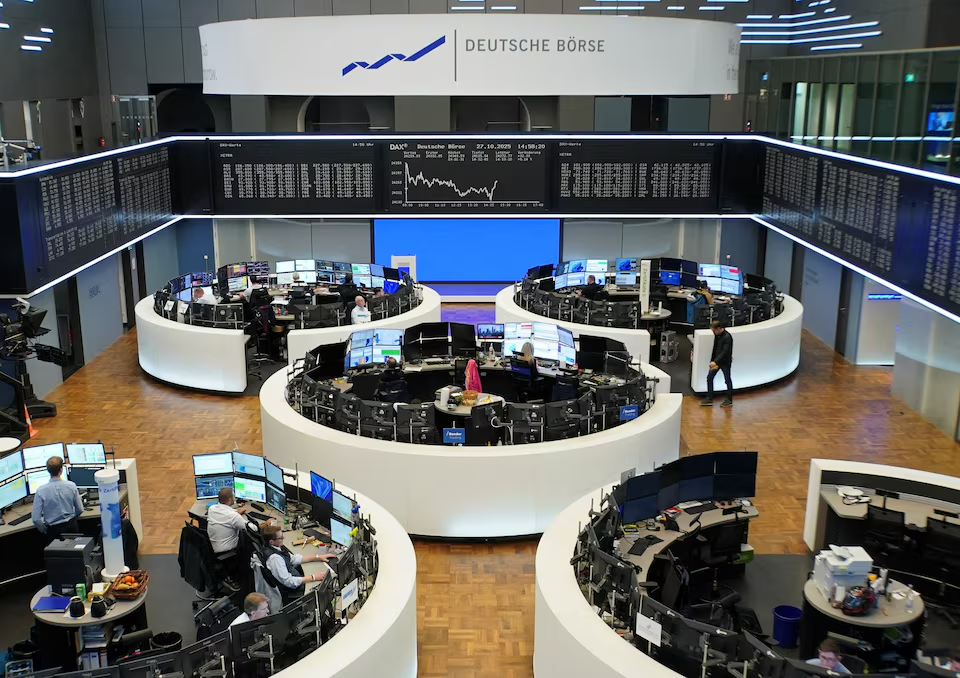
The U.S. President cites rising global nuclear threats and competition with China and Russia as reasons for restarting nuclear testing.
BUSAN, South Korea — October 30, 2025.
In a move that has sparked global debate and renewed fears of a nuclear arms race, U.S. President Donald Trump announced that he has ordered the Department of Defense to immediately resume nuclear weapons testing. The decision marks the first time in more than three decades that Washington has reversed its moratorium on such activities.
Speaking on his Truth Social platform before departing South Korea for the United States, Trump said the resumption of testing is necessary to maintain strategic parity with nuclear-armed rivals, particularly China and Russia, both of which have expanded their nuclear programs in recent years.
“I have instructed the Department of War [Department of Defense] to start testing our Nuclear Weapons on an equal basis,” Trump wrote. “That process will begin immediately.”
Trump emphasized that while the U.S. has more nuclear weapons than any other country, China “will be even within five years,” warning that American deterrence must remain unmatched.
A Major Shift in U.S. Nuclear Policy
The announcement effectively ends a 33-year moratorium on U.S. nuclear testing that dates back to 1992, when the country conducted its last underground detonation. That ban was instituted under President George H.W. Bush following the end of the Cold War.
The move raises questions about the future of the Comprehensive Nuclear-Test-Ban Treaty (CTBT), signed in 1996 but never ratified by Washington. Since then, only India, Pakistan, and North Korea have conducted nuclear test explosions.
While Trump did not specify whether the renewed testing would involve nuclear-explosive detonations or missile flight tests, analysts warn that either form could trigger heightened tensions with rival powers and destabilize decades of arms control progress.
Rising Nuclear Competition With China and Russia
Trump’s order comes amid intensifying competition with Beijing and Moscow. According to the Stockholm International Peace Research Institute (SIPRI), China now possesses roughly 600 nuclear warheads, adding around 100 per year since 2023. The U.S. Department of Defense estimates China will exceed 1,000 operational warheads by 2030.
Meanwhile, Russia remains the world’s most heavily armed nuclear power with about 5,459 total warheads, according to the Center for Arms Control and Non-Proliferation (CACNP). The U.S. stockpile currently sits at approximately 5,550 warheads, including around 3,800 active.
Experts say Trump’s move could signal the beginning of a new nuclear arms race, reminiscent of Cold War dynamics. “If the U.S. resumes testing, other countries may follow suit,” warned one European security analyst. “It could undermine global non-proliferation efforts at a time when tensions are already rising.”
Approval for South Korean Nuclear Submarine Program
In a parallel announcement, President Trump confirmed that he has granted approval for South Korea to develop and deploy nuclear-powered submarines, following successful trade and defense negotiations with President Lee Jae Myung.
The plan would make South Korea the seventh nation capable of operating nuclear-powered submarines, joining the U.S., U.K., France, Russia, China, and India. Trump said the move would “replace old-fashioned, diesel-powered submarines” and enhance regional defense capabilities.
“Our allies deserve the best,” Trump stated. “South Korea will now have submarines that are modern, powerful, and capable of defending freedom in the Indo-Pacific.”
The submarines are reportedly planned to be constructed in Philadelphia, Pennsylvania, where the South Korean firm Hanwha operates a major shipyard.
Strategic and Regional Implications
The approval for Seoul’s nuclear-powered fleet represents a major strategic shift in Asia-Pacific security and could further strain relations with North Korea and China.
President Lee Jae Myung said during his meeting with Trump that revising the U.S.-South Korea nuclear cooperation agreement would give Seoul “greater flexibility” to enrich uranium and reprocess nuclear fuel—activities long restricted by Washington.
“If fuel supply is permitted, we can build several submarines equipped with conventional weapons using our own technology,” Lee said. “This will strengthen our ability to defend the Korean Peninsula and reduce the burden on U.S. forces.”
While Lee emphasized that the initiative focuses solely on nuclear propulsion, not weapons development, regional experts caution that the move could provoke an arms buildup across East Asia.
Global Reaction and Concerns
The White House’s decision to restart nuclear testing is expected to draw strong international criticism, particularly from the European Union, Japan, and global non-proliferation organizations. Many fear the decision will erode trust in arms control treaties and embolden other nuclear states to follow suit.
The United Nations Office for Disarmament Affairs (UNODA) has not yet issued a statement but is expected to convene an emergency session if the U.S. begins active testing.
Meanwhile, Russia and China have yet to comment officially, though state media outlets in both countries have already described the move as “provocative” and “destabilizing.”
A New Era of Nuclear Politics
Trump’s twin announcements—resuming U.S. nuclear tests and empowering South Korea’s defense capabilities—underscore a broader return to hardline defense policies and strategic deterrence posturing.
As the U.S. reasserts its military power, the geopolitical landscape of East Asia and global nuclear diplomacy may be entering its most volatile period in decades.
“We’re entering uncharted territory,” said an international relations professor at Seoul National University. “If nuclear testing resumes, it will redefine the rules of global deterrence and reshape the balance of power.”

Leave a Reply